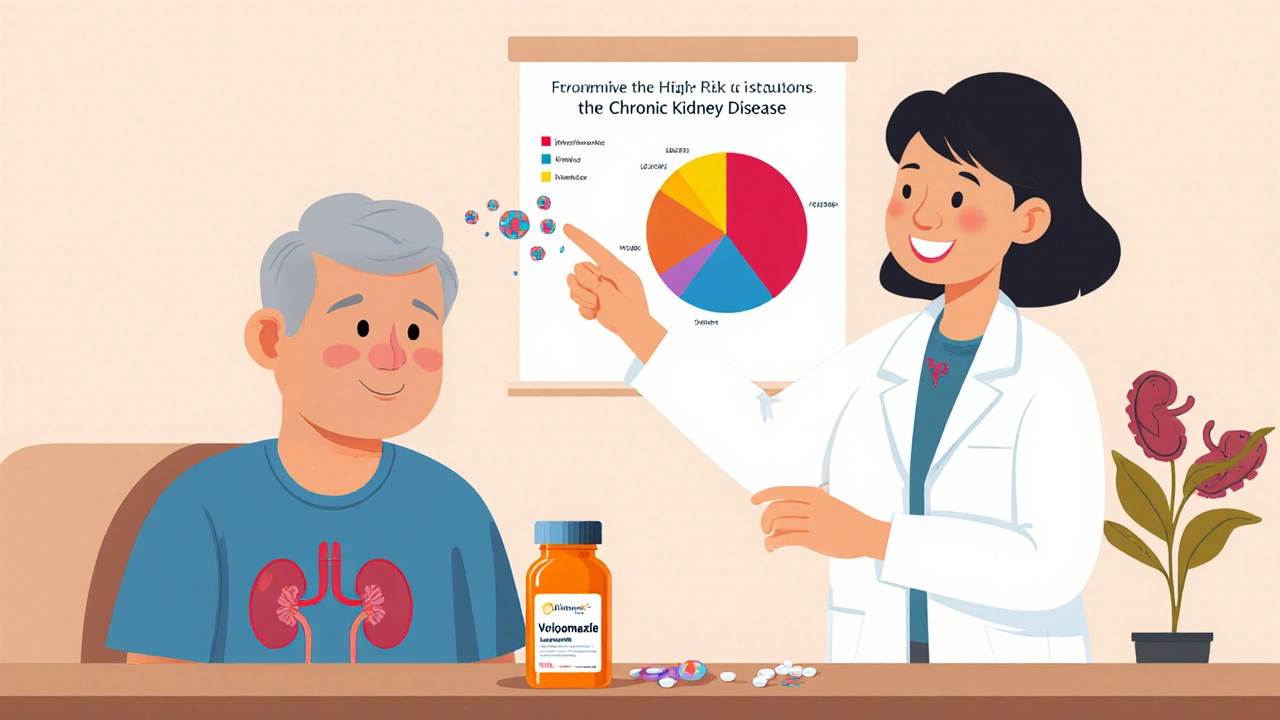When dealing with Kidney disease, a condition where the kidneys lose the ability to filter waste and balance fluids. Also known as renal disease, it often develops silently and can lead to serious health issues. Kidney disease is one of the top reasons people end up in chronic care, and two major culprits push it forward: Hypertension, high blood pressure that strains kidney vessels and Diabetes, persistent high blood sugar that damages the filtering units of the kidney. When either of these conditions runs unchecked, the kidneys’ filtering cells scar, reducing their ability to clear toxins. That loss often forces patients toward Dialysis, a machine‑based therapy that replaces kidney function as a bridge to recovery or transplant. In simple terms, Kidney disease results from hypertension, Kidney disease can be triggered by diabetes, and Kidney disease may require dialysis. Understanding these links helps you spot risk early and act before irreversible damage sets in.
Symptoms rarely shout “kidney trouble” at first. Fatigue, swelling in the ankles, and a subtle change in urine frequency are common whispers. Lab tests such as serum creatinine and estimated glomerular filtration rate (eGFR) give a numeric picture of kidney function, while urine protein checks reveal early leaking of essential proteins. Another hidden gatekeeper is medication side effects. Drugs like non‑steroidal anti‑inflammatory medicines, certain antibiotics, and even some blood pressure pills can add stress to already weak kidneys, nudging electrolyte balance out of whack. Low potassium, high phosphorus, or altered calcium levels can cause muscle cramps, bone pain, or heart rhythm issues. Managing kidney disease therefore means adjusting medication dosages and monitoring blood chemistry. Early detection relies on regular kidney function tests, especially for people with hypertension or diabetes, because catching a dip in eGFR by a few points can prompt lifestyle tweaks that stall progression.
The road to better kidney health blends medical care with daily habits. Keeping blood pressure below 130/80 mmHg and blood sugar in target range reduces the wear on kidney filters. A diet low in sodium, moderate in protein, and rich in fresh fruits and vegetables supports fluid balance and lessens the filtration load. Exercise, weight control, and quitting smoking add extra protection. Nephrologists can recommend when to start dialysis, discuss transplant options, or suggest newer kidney‑protective drugs that lower the risk of further decline. Below, you’ll find a curated list of articles that dive deep into medication safety, side‑effect management, and practical tips for living with kidney‑related conditions. These resources bring together expert advice on everything from safe drug storage to navigating common treatments, giving you a toolbox to manage kidney disease with confidence.
Posted by
Jenny Garner
13 Comments

Learn how to safely use voriconazole for fungal infections in kidney disease patients, covering dosing adjustments, monitoring, and drug interactions.
read more